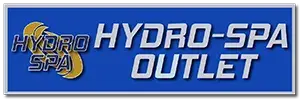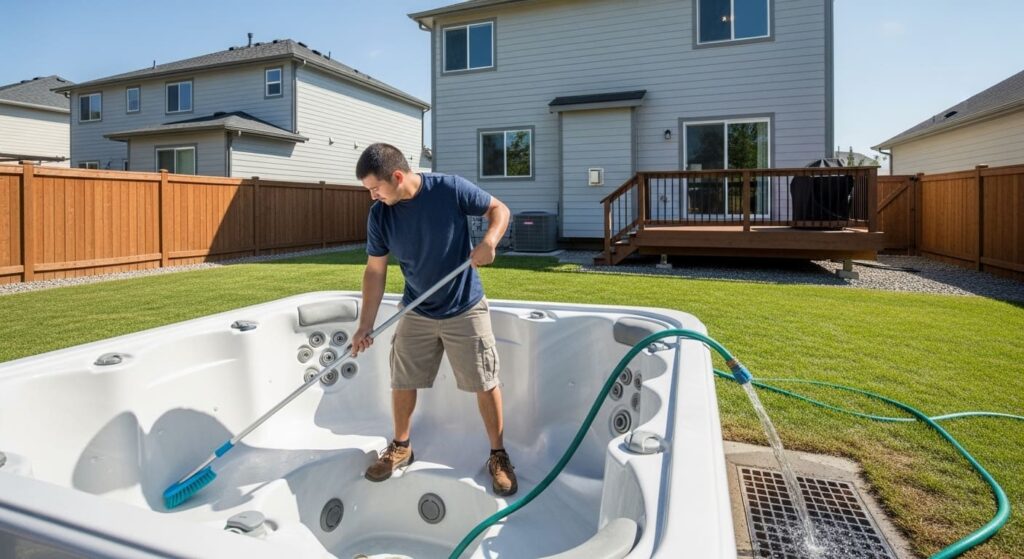In Woodland Hills CA, hot tub owners count on a reliable drain and cleaning routine to keep water inviting and equipment running smoothly. Our local climate—with warm afternoons, cooler evenings, seasonal winds, and intermittent dust—presents unique challenges that make a proper, step-by-step approach essential. If you have ever wondered precisely how professionals carry out the process and why each step matters, this guide walks you through the workflow from first test to final balance. As you explore, know that resources like Hydro-Spa Outlet can help you connect with guidance and options tailored to your spa and your preferences.
Although every make and model has its quirks, the core sequence remains consistent because water chemistry, plumbing dynamics, and surface care follow predictable rules. Done right, a drain and clean does more than refresh the look of your spa; it resets the system, stripping away dissolved buildup and hidden biofilm so sanitizers can work efficiently. That reset is especially valuable here, where breezy afternoons can carry debris and temperature swings nudge chemistry off balance.
Initial evaluation and planning
Professional service begins with a conversation and a quick site review. The technician asks about your sanitizer method—traditional, mineral, or salt—how often you soak, and whether you have noticed issues like foaming, cloudiness, or low-flow warnings. They test the water to understand current chemistry and inspect filters, shell condition, and cover. This assessment informs the plan: where to route drain water to protect landscaping, whether a hose pre-filter will help reduce minerals on refill, and how best to access the spa given your yard’s layout.
In Woodland Hills, where many backyards feature sloped areas or tight side yards, routing discharge thoughtfully matters. Pros use long hoses and flow control to avoid erosion or pooling, and they protect nearby hardscape and garden beds. Clear communication at this stage ensures the rest of the visit feels seamless.
Purging the plumbing lines
The first technical step is a line purge. Biofilm—a slimy matrix that clings to plumbing walls—can harbor microorganisms and reduce sanitizer efficiency. A specialized purge product circulates through jets and lines with the pumps running, loosening that film and suspending residues in the water. Technicians open and close diverter valves, cycle air controls, and run multiple jet zones so the solution reaches every pathway. This targeted circulation is key: without a purge, residual biofilm remains, and new water will be fighting an uphill battle from day one.
During the purge phase, expect some foaming and dislodged material to appear at the surface. That is normal and a sign that buildup is being released. The technician will monitor the activity, allowing enough time for the cleaner to do its work without overextending circulation.
Power down and draining
Once the purge has done its job, power is shut off at the control panel or breaker to protect electronics and ensure safety. A submersible pump is placed in the footwell to accelerate draining, and hoses are positioned along the planned discharge route. Technicians keep an eye on hose endpoints, adjusting flow as needed to prevent localized flooding. If your spa sits within a deck or tight alcove, they will adapt hose routing to safeguard the structure and any electrical components nearby.
As water levels drop, components like headrests and filters are removed for separate cleaning or evaluation. If filters are in good shape, they will be deep-cleaned; if fibers are collapsing or the media is saturated beyond recovery, replacement may be recommended to restore optimal flow in the next cycle.
Detailing the shell and components
With the tub empty, the technician turns to the shell. The waterline—where oils, lotions, and airborne dust tend to collect—gets special attention. Non-abrasive cleaners and soft cloths or sponges remove residue without dulling the acrylic. Jets and trim are wiped carefully, and the footwell is squeegeed clean. Any stubborn scale is treated gently to avoid scratches. Pillows are cleaned and inspected, and the cover’s underside is checked for early signs of mildew or seam wear. The goal is a pristine, residue-free interior that sets the stage for stable water.
Filter care happens in parallel. Deep-cleaning involves rinsing from the inside out to dislodge trapped debris, then soaking in a cartridge cleaner designed to break down oils. After a thorough rinse and dry, the filters return to their housings, ready to support strong circulation. Where replacement is the smarter choice, the technician will explain why and install new cartridges sized to your model.
Refill and system priming
Refilling begins with a hose placed in the filter compartment or designated fill location to reduce air pockets in the plumbing. Some providers use a pre-filter to reduce minerals—a helpful step given local water characteristics that can encourage scale if unmanaged. As the water rises, the technician checks for weeping at unions or fittings and confirms that the pump seals remain dry. Once full, power is restored, and the system is primed. Any entrained air is bled through jets and relief points until a strong, consistent flow returns across all zones.
Priming is more than a switch flip. It involves patience and attention, especially on multi-pump spas. The technician cycles through jet groups, opens and closes diverter valves, and monitors the control panel for any flow or overheat warnings. This is the moment where prior steps show their value: clean filters and clear lines make priming smooth and uneventful.
Water balancing and verification
With circulation established, the focus shifts to chemistry. Alkalinity, pH, and sanitizer are adjusted to your system and preferences. If you favor a salt system, attention turns to salt level, stabilizers, and scale control. For traditional sanitizers, the technician establishes a baseline that holds during the first days of use. Calcium hardness is considered with local water in mind, striking a balance that discourages scale without making the water feel aggressive to surfaces.
Verification includes checking jet strength, heater operation, and control responsiveness. The technician listens for unusual pump noise, confirms that the cover seals well, and ensures the control panel displays normal readings. You will receive guidance on when to enjoy your first soak—often after the water reaches temperature and initial sanitizer adjustments have stabilized.
Local nuances in Woodland Hills
Our area’s sun and wind patterns influence maintenance. After a stretch of breezy afternoons, airborne dust can settle on the cover and slip into the water when you open it. A simple wipe-down before lifting the cover can help, and scheduling drain-and-clean appointments after particularly dusty periods pays off. Likewise, late summer and early fall are excellent times to reset the tub ahead of holiday gatherings and cooler nights when soaking becomes a nightly ritual.
How homeowners can support the process
There are small steps that make a big difference. Rinse filters periodically between professional visits to keep the flow strong. Shower before soaking to reduce oils and cosmetics that create scum lines. Keep the cover clean and latched to preserve heat and block debris. Top off water promptly after parties or frequent use to prevent air from entering the plumbing. These habits extend the clarity and comfort you gain from a thorough professional service.
Choosing a knowledgeable provider
When selecting a company, ask about their line purge method, shell cleaning products, and approach to balancing for different sanitizer systems. Inquire how they plan to discharge water safely on your property and whether they carry hose pre-filters for high-mineral refills. A provider who walks you through the plan and welcomes questions demonstrates the care and transparency that lead to consistently great results. To compare approaches and prepare confident questions, consult a helpful guide like Hydro-Spa Outlet before you schedule.
Post-service momentum
After the appointment, expect calm, stable water. You can maintain that momentum by testing sanitizer and pH several times a week, rinsing filters, and keeping the cover tidy. If anything seems off—a return of cloudiness, a recurring waterline ring, or a subtle drop in jet strength—reach out promptly. Early communication allows for quick adjustments that preserve the reset and protect equipment.
FAQ
Q: How long does a professional drain and clean usually take?
A: Timing depends on spa size, access, and water condition, but many appointments fit comfortably within a half day from arrival to final checks.
Q: Do technicians always perform a line purge?
A: Thorough providers do, because removing biofilm inside plumbing helps sanitizer work effectively and keeps water clear longer.
Q: Will draining harm my landscaping?
A: Pros route discharge carefully and control flow to protect soil and hardscape, discussing the plan with you before draining begins.
Q: How soon can I use the spa after service?
A: Typically, after the water reaches your set temperature and initial chemistry stabilizes. Your technician will confirm specific timing.
Q: What should I do between appointments?
A: Rinse filters, wipe the cover, shower before soaking, and test basic chemistry regularly. These simple habits extend the results.
Q: Does local water affect the process?
A: Yes. Mineral content influences scale potential, so technicians tailor refilling and balancing to local conditions to keep water stable.
If you are ready to experience a smooth, methodical drain and cleaning that leaves your spa sparkling and reliable, schedule with a local expert who respects your time and your backyard. To explore your options and take the next step with confidence, visit Hydro-Spa Outlet and begin planning your appointment.
Trust Hydro-Spa Outlet for Expert Hot Tub Cleaning Service
Ensure your spa is cleaned the right way every time. Contact Hydro-Spa Outlet in Woodland Hills, California, for professional hot tub drain and cleaning services that leave your water fresh, your system protected, and your relaxation uninterrupted.

